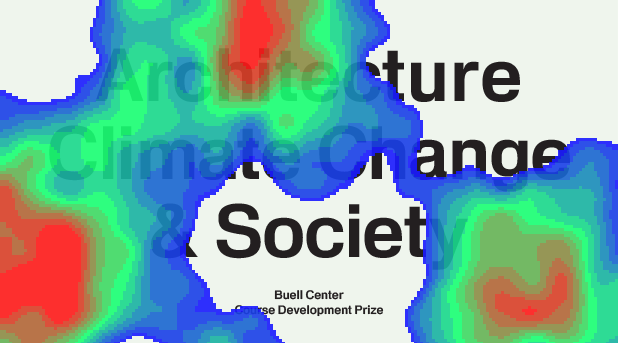Penn State
Stuckeman School to virtually host UK architecture startup co-founders
UNIVERSITY PARK, Pa. — The College of Arts and Architecture’s Stuckeman School will host Mollie Claypool and Gilles Restin, co-founders of Automated Architecture Ltd (AUAR), a design and technology company based in the U.K., for a virtual lecture at noon on Feb. 8 as a part of the school’s Lecture and Exhibit Series.
In the lecture, titled “Automating Architecture: Architecture in Large Numbers,” Claypool and Retsin will discuss their work using robotics and automation to provide high-quality, sustainable affordable housing. They will explore how robotics, artificial intelligence and automation can enable architecture to meaningfully engage with global crises, such as the climate and ecological crisis and housing inequity.
The company is a spinoff of AUAR Labs at The Bartlett School of Architecture at University College London (UCL), where Claypool and Restin are associate professors.
Claypool, CEO of AUAR, is the history and theory coordinator of the master of architecture in architectural design program at The Bartlett. She has been a visiting professor at the Cluster for Excellence Integrative Computational Design and Construction for Architecture at the University of Stuttgart (Germany) and was a faculty member at the Architectural Association School of Architecture in London.
Claypool is the managing editor of “Prospectives,” an open access peer-reviewed journal supported by the Bartlett School. She co-wrote “Robotic Building: Architecture in the Age of Automation” and authored the SPACE10 report, “The Digital in Architecture: Then, Now and in the Future.”
The design work and critical discourse of Retsin, who is the chief technology officer and chief architect at AUAR, have been internationally recognized through awards, lectures and exhibitions at major cultural institutions such as the Museum of Art and Design in New York, the Royal Academy in London and the Centre Pompidou in Paris.
He has edited books on architecture, computational design and robotics. He studied architecture in Belgium, Chile and the U.K., where he graduated from the Architectural Association School of Architecture.
Co-hosted by the Department of Architecture, the lecture will be presented via Zoom.
University of Tennessee-Knoxville
University of Tennessee-Knoxville News – December 2022
The Chairs for the National Conference on the Beginning Design Student (NCBDS) awarded Associate Professor Jennifer Akerman “Best Paper,” for the association’s meeting, “Metabolic Architecture: Growth and Decay,” hosted by Ball State University, April 1–2, 2022. Akerman’s paper, in part, argues that because architecture changes owing to the effects of material accumulation and decay, architects can engage a prolonged relationship to the buildings they design by more intentionally choreographing, over time, the continual maintenance, repair, and replacement of building components.
Professor Thomas (T.K.) Davis, FAIA, presented two papers in October, 2022: “Learning to See: Norman Daly’s Course ‘Color, Form and Space,” at The Llhuros Symposium, hosted by the UTK School of Art (8 October); and “Nashville’s East Bank Vision: City Building in the 21st Century,” at the Fall, 2022 Meeting of the Tennessee Chapter of the American Planning Association (27 October, Knoxville, TN).
UT Distinguished Professor Marleen K. Davis, DPACSA, FAIA, was elected Vice Chancellor of the ACSA College of Distinguished Professors. Next year she will assume the Chancellorship of the college.
Professor George Dodds, PhD, DPACSA, presented the “Giambattisa Piranesi, Modernity, and the Continuous Avant-Garde,” at a Virtual Roundtable, University of South Carolina, (July, 2021); his “Duvall Decker Architects’ Thompson Center and the Long Arc of Practice,” appeared on the Common\Edge website (November 22, 2021); “Monumental Revival: Architect Guido Pietropoli Resurrects Carlo Scarpa’s Revered Brion Memorial in Italy’s Veneto,” was the cover article of the February, 2022 Architectural Record; in August, 2022, he published, “Design with Nature: Then, Now, and After,” with Christina Geros (The Bartlett), in The Routledge Companion to Ecological Design Thinking (Routledge); in October, 2022, he presented a lecture largely based on the chapter, at the University of Hartford Architecture Program; in September, 2022, he presented “Long and Important Practices Rendered Too Briefly: The Architecture of Alfred and Jane West Clauss,” part of the SAH’s Philadelphia Chapter lecture series “The Elusive Philadelphia School”. Effective December 31, 2022, Dr. Dodds stepped down after 22 years on the faculty of architecture, teaching history/theory and design. He joined the school immediately following the completion of his dissertation at the University of Pennsylvania, Landscape and Garden in the Work of Carlo Scarpa. He was the college’s first James R. Cox Professor (2006-09) and the first Alvin and Sally Beaman Professor (2012-2022). The Executive Editor of the Journal of Architectural Education (2007-11), he has published two books, over 80 scholarly essays, chapters, and works of criticism in professional journals and newspapers.
During his second Fulbright Visiting Professorship at the Crackow University of Technology (Poland), Associate Professor L. David Fox delivered the public lecture, “Drawing to See” (June 2022). His lecture is to be followed by the exhibition of his original paintings/drawings, “David Fox: Drawing to See,” mounted at the gallery of the Stowarzyszenie Architektow Polskich (SARP), January, 2023.
Associate Professor Avigail Sachs’ is publishing, The Garden in the Machine: Planning and Democracy in the Tennessee Valley Authority (UVA Press, March 2023), which examines the social and political ideals of the first 25 years of the TVA, its architects, landscape architects and regional planners – how their ideals filtered through the institution into practice. The book focuses on the tensions between centralized planning and democratic action, including such topics as model towns and their derivatives, visitor facilities, new research on single family homes, and development for leisure and recreation along TVA’s “chain of lakes.”

 Study Architecture
Study Architecture  ProPEL
ProPEL 


